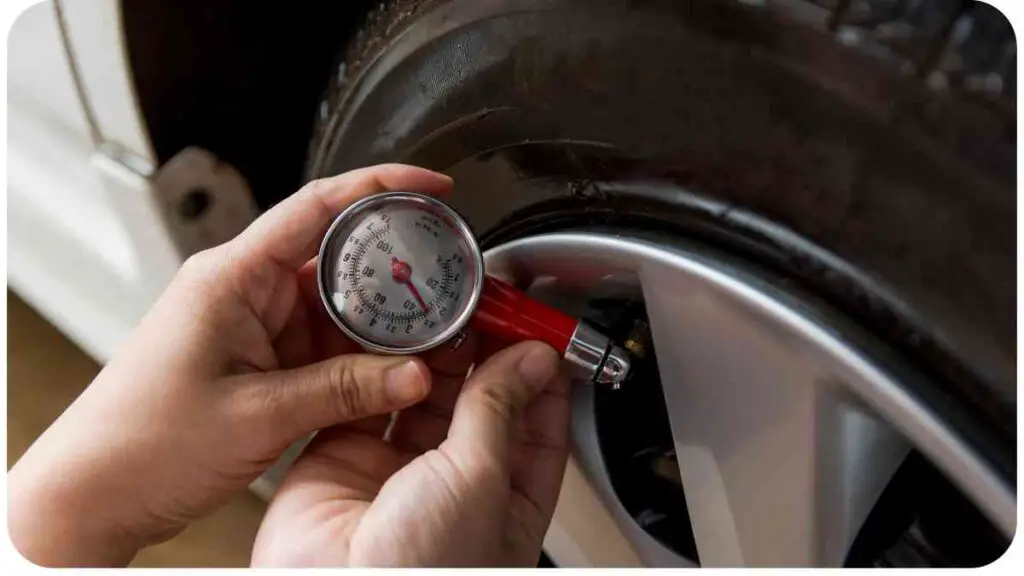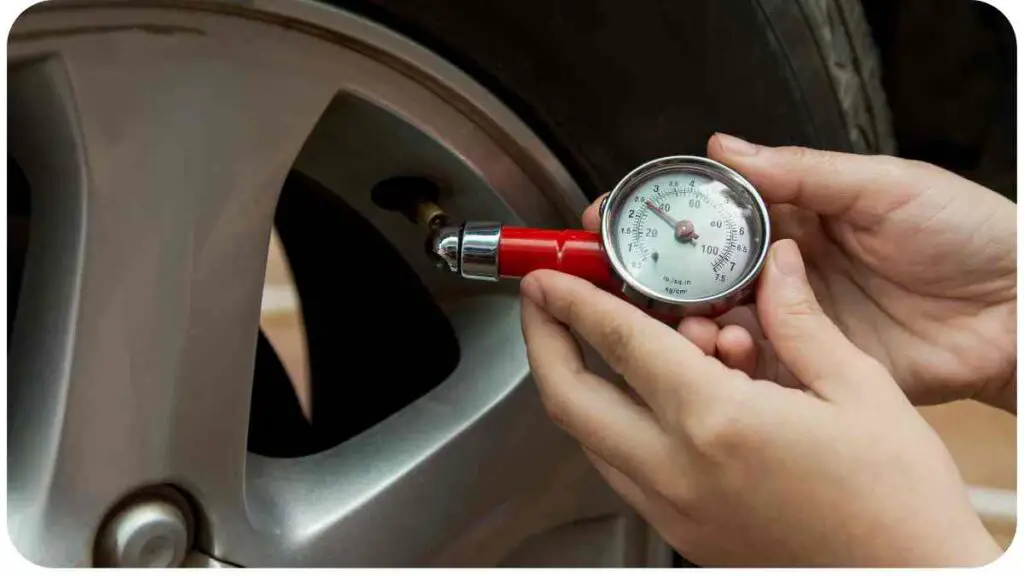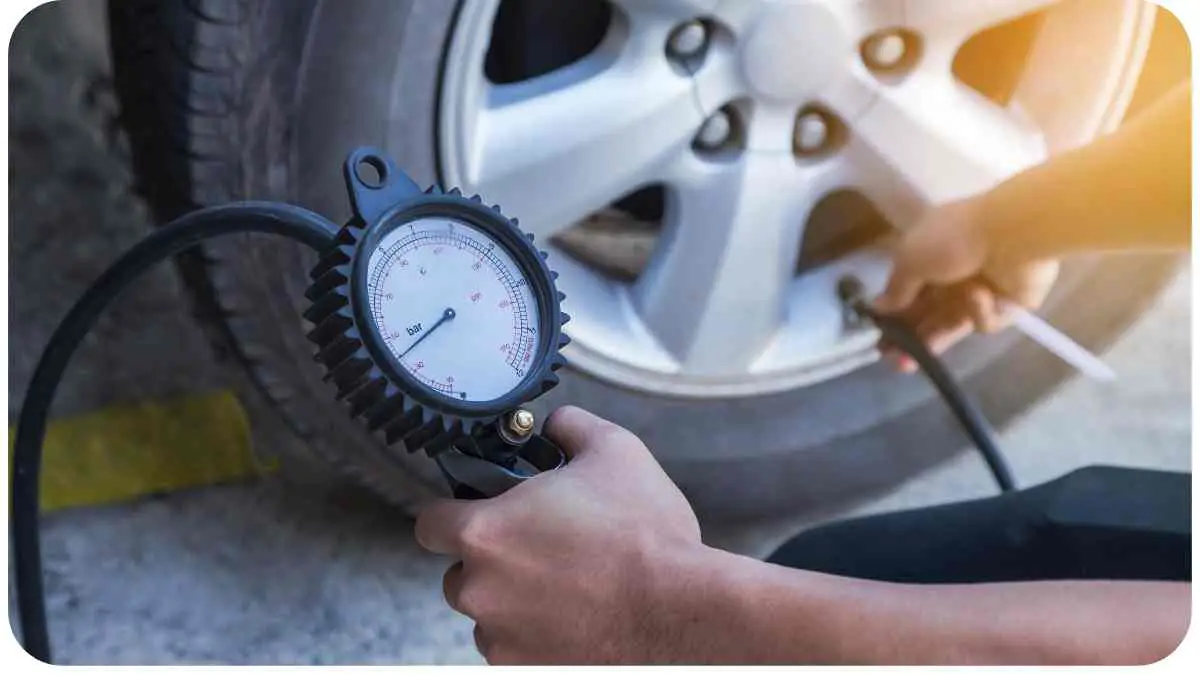When it comes to off-roading adventures, traversing sandy terrains can be both thrilling and challenging. Whether you are a seasoned enthusiast or a newbie looking to explore the sandy landscapes, understanding the importance of air pressure for sand driving is crucial.
This comprehensive guide will delve into the topic, providing insights, tips, and recommendations for finding the ideal air pressure for your off-road excursions on sandy terrain.
| Takeaway |
| Adjusting tire pressure is crucial for optimal performance on sandy terrains. |
| Lower tire pressure enhances traction and flotation in soft and loose sand. |
| Regularly inspecting tires helps identify damage or wear and ensures safety. |
| Proper tire maintenance, including rotation and rinsing, extends tire life. |
| Using the right gear, such as recovery tracks and snatch straps, aids in recovery from getting stuck. |
| Smooth and gradual steering inputs, along with maintaining momentum, help maintain traction in sand. |
| Sand driving demands proper preparation, caution, and the presence of necessary recovery gear. |
| Safety and knowledgeable driving techniques should always be prioritized. |
2. Understanding Sand Driving
Driving on sand requires a distinct set of skills and vehicle preparations. The peculiar properties of sand, such as its loose composition and low grip, necessitate certain adjustments to ensure a safe and enjoyable driving experience. Additionally, the type of vehicle and specific conditions of the sandy terrain play a significant role in determining the optimal air pressure for sand driving.
When tackling various terrains, including sand, it’s crucial to understand the nuances of off-road driving. Proper tire pressure ensures stability and control, making your off-road experience safer and more enjoyable.
3. Importance of Air Pressure in Sand Driving

The air pressure within your tires plays a vital role in off-road performance, especially on sandy surfaces. Properly inflated tires allow for better traction, distributing the vehicle’s weight more evenly, reducing the chance of sinking, and enhancing overall maneuverability. On the other hand, improperly inflated tires can lead to decreased traction, sinking, and potentially getting stuck in the sand.
4. Factors to Consider for Determining Air Pressure
Several factors contribute to determining the ideal air pressure for sand driving. These factors include the type and weight of the vehicle, the type of tires being used, the sand conditions, and the terrain’s incline. It is essential to consider all these variables to ensure optimal performance and prevent any mishaps during your off-road escapades.
Selecting the right off-road tire is paramount for optimal performance. This comprehensive guide explores factors like tread patterns and durability, guiding you to make an informed decision for your off-road adventures.
5. Recommended Air Pressure Range
To help guide you in finding the ideal air pressure for your vehicle during sand driving, the following table provides general recommendations based on different vehicle types:
Table: Air Pressure Recommendations for Different Vehicle Types
| Vehicle Type | Front Tires (psi) | Rear Tires (psi) |
| SUVs | 15-18 | 15-18 |
| Trucks | 20-25 | 20-25 |
| Jeeps | 12-15 | 12-15 |
| ATVs | 5-8 | 5-8 |
| Motorcycles | 10-12 | 10-12 |
Note: These recommendations serve as a starting point and may need adjustments based on specific conditions and individual preferences.
Based on my experience as an avid off-roader, I have found that maintaining a slightly lower tire pressure than usual for the type of vehicle I’m driving yields the best results on sandy terrain. This slight decrease in pressure allows for a larger surface area of the tire to come into contact with the sand, providing better flotation and grip.
6. Adjusting Air Pressure for Sand Driving

Before hitting the sandy trails, it is essential to adjust your tire pressure accordingly. Here’s a step-by-step guide on how to change your tire pressure for sand driving:
- Start by measuring your tires’ current pressure using a reliable tire pressure gauge.
- Refer to the recommended air pressure range for your vehicle type and determine the desired pressure for sand driving.
- If the current pressure is higher than the desired pressure, release air by unscrewing the valve stem’s cap and pressing the center pin inside until you hear a hissing sound. Continuously check the pressure to achieve the desired level.
- If the current pressure is lower than the desired pressure, use an air compressor to fill the tires with air until you reach the desired pressure level.
- Repeat the process for all tires, ensuring they are inflated to the same pressure.
When adjusting tire pressure, I usually bring along a portable air compressor to make on-the-go adjustments depending on the specific terrain I encounter. This flexibility allows me to fine-tune the tire pressure to match the ever-changing conditions and maximize the performance of my vehicle.
Maintaining the correct tire pressure is key to off-road vehicle performance. Learn the essentials of proper inflation techniques to enhance grip, handling, and safety during your off-road escapades.
7. Tips for Driving in the Sand
Driving on sand requires a different approach compared to other terrains. Here are some handy tips to keep in mind for a successful sand driving experience:
Table: Gear Recommendations for Sand Driving
| Gear | Purpose |
| Recovery Tracks | Assist in gaining traction and getting unstuck from deep sand |
| Tire Deflator | Helps release air quickly and accurately to adjust tire pressure |
| Shovel | Useful for digging out tires and creating ramps in soft sand |
| Snatch Strap | Enables the recovery of stuck vehicles by pulling them out |
| Air Compressor | Allows easy adjustment of tire pressure for optimal performance |
Having the right gear and equipment can make a significant difference when driving in sand. In my experience, recovery tracks have proven to be invaluable in providing the necessary traction when stuck in deep sand. These durable tracks can be placed under the tires to create a stable surface for the vehicle to drive on.
Another essential piece of gear is a tire deflator. This handy tool allows you to release air from your tires quickly and accurately, ensuring you achieve the desired pressure for sand driving. It’s important to remember that different sand conditions may require slight adjustments in tire pressure, and a tire deflator provides the flexibility to make those changes on the spot.
A shovel is another item that should not be overlooked. When driving on soft sand, there is always a risk of getting stuck. Having a sturdy shovel allows you to dig out the tires and create ramps, providing a way out of a precarious situation.
For situations where recovery is necessary, a snatch strap is incredibly useful. This heavy-duty strap can be attached to both vehicles, allowing the stuck vehicle to be pulled out by another vehicle with more traction. It’s important to use the snatch strap correctly and ensure both vehicles are secure before attempting a recovery.
Finally, an air compressor is essential for easy adjustments to tire pressure. As previously mentioned, maintaining the right tire pressure is crucial for optimal performance. An air compressor allows you to inflate or deflate the tires as needed, ensuring you are ready to tackle any sandy terrain with confidence.
Remember, having the appropriate gear can not only enhance your off-road experience but also ensure your safety and peace of mind while driving on sand.
Understanding your ATV’s tire pressure is vital for a smooth and secure ride. Explore this comprehensive guide to learn about the right inflation levels, ensuring a stable and safe off-road ATV experience.
8. Common Challenges and Solutions
Driving on sandy terrain can present unique challenges that require careful navigation. Here are some common challenges you may encounter while sand driving, along with their corresponding solutions:
- Sinking in Soft Sand: When driving on loose and soft sand, it’s easy for your vehicle to sink. The best solution is to reduce tire pressure to increase flotation and distribute the weight of the vehicle over a larger surface area. Additionally, driving at a consistent speed and avoiding sudden acceleration or braking can help prevent sinking.
- Lack of Traction: Sand’s loose composition can result in reduced traction, making it challenging to maintain control of your vehicle. To address this, avoid aggressive steering and sudden movements, as they can cause your tires to dig into the sand. Gradual and smooth steering inputs, combined with maintaining momentum, can help you maintain traction and control.
- Getting Stuck: Even with proper preparation, getting stuck is always a possibility when driving on sand. In such situations, it’s important to remain calm and assess the situation. Using recovery tracks, a snatch strap, or even a shovel can provide solutions for getting your vehicle unstuck. Remember to engage the help of other vehicles or fellow off-roaders if needed.
- Overheating: Sand driving can put additional strain on your vehicle’s cooling system due to the soft sand impeding air circulation. To prevent overheating, avoid idling for extended periods and keep an eye on your engine temperature gauge. It may be necessary to take breaks to allow your vehicle’s engine and cooling system to cool down.
Over the years, I have encountered many of these challenges and learned valuable lessons. One memorable experience was when I found myself sinking into soft sand during a trip to the desert. Thanks to proper tire pressure adjustments and gradually accelerating out of the situation, I was able to overcome the challenge and continue my journey without further difficulty.
9. Maintaining Vehicle Performance in Sand
Driving on sand can be demanding on your vehicle, particularly on the tires. Here are some tips to help you maintain optimal vehicle performance while driving on sandy terrain:
Table: Tire Maintenance Tips for Sand Driving
| Tip | Purpose |
| Regularly inspect tires | Check for any signs of damage or wear |
| Rotate tires periodically | Evenly distribute wear and extend tire life |
| Rinse tires after sand driving | Remove any residual sand and prevent damage and corrosion |
| Maintain proper alignment and balance | Ensure even tire wear and optimal performance |
| Consider using specially designed sand tires | Enhance traction and performance in sandy conditions |
Proper tire maintenance is essential for optimum performance in sand driving. Regularly inspect your tires for any signs of damage or wear, such as cuts, bulges, or tread wear. This allows you to address any issues before they escalate and affect your off-road experience.
In addition to inspection, rotating your tires periodically helps evenly distribute wear, extending the overall tire life. This is especially important in sand driving, where the constant spinning and shifting of the tires can lead to uneven wear patterns.
After a sand driving excursion, it’s crucial to rinse your tires to remove any residual sand. Sand particles can get lodged in the treads and potentially cause damage or corrosion over time. Simply using a hose to rinse off the sand and dirt can go a long way in maintaining the longevity of your tires.
Maintaining proper alignment and balance is another key factor in tire maintenance. Misalignment can lead to uneven tire wear and adversely affect vehicle handling. Regularly check your alignment and have it adjusted if necessary to ensure a smooth and controlled driving experience.
For those who frequently venture into sandy terrains, considering investing in specially designed sand tires can be beneficial. These tires are engineered with unique tread patterns that provide enhanced traction on loose surfaces. The aggressive tread design and wider tread blocks improve grip and help prevent tire slippage in the sand.
Taking care of your tires and ensuring their optimal condition not only enhances your overall off-road performance but also contributes to a safer driving experience. By maintaining your tires, you can enjoy sand driving adventures with confidence and peace of mind.
Enhance your 4×4 off-roading experience by considering a lift kit. This guide explores various options, benefits, and considerations, empowering you to make an informed decision for your off-road adventures.
10. Conclusion
In conclusion, finding the ideal air pressure for sand driving is crucial for a successful and enjoyable off-road experience. By considering factors such as the type of vehicle, sand conditions, and recommended pressure ranges, you can optimize your vehicle’s performance on sandy terrains.
Adjusting tire pressure, using the recommended gear, and employing proper driving techniques can help you navigate successfully through sand challenges. It’s essential to be prepared for common sand driving obstacles and have the necessary equipment to handle unexpected situations.
Remember, safety is paramount, and always prioritize your well-being and that of fellow off-roaders. Be prepared for potential hazards, take necessary precautions, and have a recovery plan in place in case of emergencies.
With the right knowledge, equipment, and approach, sand driving can be an exhilarating adventure. So, get ready to conquer the sandy landscapes and create unforgettable memories behind the wheel!
Further Reading
Here are some additional resources where you can find more information about air pressure for sand driving:
- The Keys to Successful Sand Driving: This article by Cooper Tires provides valuable insights into the key factors for successful sand driving, including air pressure, tire selection, and driving techniques.
- Best Pressure for Driving on Sand: This comprehensive guide from Tyrereview.com.au offers detailed information on finding the best tire pressure for driving on sand, including recommendations for different vehicle types and tips for adjusting pressure.
- Off-Roading Tips: How to Drive on Sand: This article provides a comprehensive guide to driving on sand, including tips on tire pressure, gear selection, and driving techniques. It offers practical advice for both novice and experienced off-roaders.
FAQs
Here are some frequently asked questions about air pressure and sand driving:
What is the ideal tire pressure for sand driving?
The ideal tire pressure for sand driving depends on various factors such as vehicle type, tire size, and sand conditions. Generally, slightly lower tire pressures than usual are recommended to increase traction and flotation on sandy terrain.
How does tire pressure affect sand driving performance?
Tire pressure plays a crucial role in sand driving performance. Properly inflated tires distribute the vehicle’s weight over a larger surface area, reducing the chance of sinking and enhancing traction. Adjusting tire pressure can improve grip, maneuverability, and overall off-road performance.
Should I use different air pressures for front and rear tires?
In most cases, using the same air pressure for both front and rear tires is recommended. However, depending on the specific conditions and vehicle setup, slight adjustments may be necessary to achieve optimal performance. It’s essential to consider the vehicle’s weight distribution and individual preferences when determining tire pressure.
Can I use regular road tires for sand driving?
While regular road tires can be used for sand driving, they may not provide the same level of performance and traction as specially designed off-road or all-terrain tires. Tires with wider treads, more aggressive patterns, and lower air pressures are better suited for driving on sand.
What precautions should I take when driving on sand?
When driving on sand, it’s important to take necessary precautions to ensure safety and prevent mishaps. Some key tips include reducing tire pressure, avoiding sudden movements or aggressive steering, maintaining momentum, carrying essential recovery gear, and knowing the specifics of the sand terrain you’ll be driving on. Always assess the conditions and adapt your driving technique accordingly.
Note: The answers provided here are general guidelines and may not apply to all situations. It’s important to thoroughly research and consider the specific requirements of your vehicle and terrain before undertaking sand driving activities.

Hi there! I’m Hellen James, and I’m the author of Unified Off-roads. I’ve been driving off-road for more than ten years, and I’ve had a lot of fun in that time—and a few not-so-great experiences too. But I’ve always wanted to help other people get started off-roading, so I decided to start this blog to share my knowledge with others.


